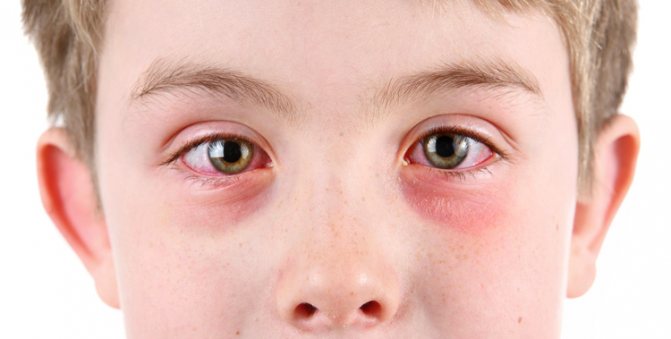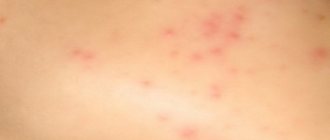In the article we will look at the side effects of Amoxicillin, as well as the instructions for it. This is a semi-synthetic antibiotic with a wide spectrum of effects from the pharmacological category of penicillins. This product is effective against gram-positive and gram-negative anaerobic microorganisms. In terms of its chemical properties, the main element is close to ampicillin, but has higher bioavailability when taken orally.
The medication is often prescribed to patients during various infectious diseases. Many people complain about the development of numerous side effects from Amoxicillin. Frequent reactions of the body include severe dry mouth, the development of hives, and diarrhea. Patients report: “I feel like a drug addict after Amoxicillin.” However, before asserting that these symptoms arose while taking this medication, it is necessary to clarify its main characteristics and understand how it acts on the body, as well as which substances from its composition can cause such physiological conditions.
Compound
The drug "Amoxicillin" in a dosage of 500 mg is produced in two forms: capsules and tablets.
One capsule contains the active element - amoxicillin in a dose of 500 mg (in the form of amoxicillin trihydrate) and excipients such as sodium lauryl sulfate, magnesium stearate, sodium starch glycolate. The gelatin capsule contains purified water, sodium lauryl sulfate, bronopol, povidone, gelatin, ponceau 4 R (E124), brilliant blue FCF (E133), titanium dioxide (E171), quinoline yellow (E104).
One tablet contains amoxicillin trihydrate as an active element, as well as excipients: talc, potato starch, Tween, magnesium stearate.
Pharmacological properties
According to the instructions for use for Amoxicillin 500 mg tablets, this is an antibacterial, acid-resistant, broad-spectrum bactericide from the category of semi-synthetic penicillins. Promotes suppression of transpeptidase, disruption of the synthesis of peptidoglycan (supporting protein of cell walls) during the period of growth and division, provokes lysis of bacterial cells. Clinically significant gram-negative microorganisms sensitive to the main substance of this medication: Escherichia coli, Klebsiella spp., Salmonella, Proteus mirabilis, Shigella, Haemophilus influenzae, Campilobacter, Leptospira, Neisseria gonorrhoeae, Chlamydia, Neisseria meningitidis.
In addition, the drug exhibits high activity against gram-positive aerobic microorganisms: Streptococcus spp., Staphylococcus spp. (except for strains that produce penicillinase). Amoxicillin also has activity against Helicobacter pylori, but does not affect indole-positive strains of Proteus. Mycoplasma, rickettsia, and viruses are also resistant to its action. Microorganisms that have the ability to produce penicillinase are resistant to amoxicillin. The effect of the medication develops 15-30 minutes after administration and lasts approximately 8 hours.
The active element is quickly absorbed after administration. The effect of food on the absorption of amoxicillin has been partially studied. Amoxicillin penetrates into most fluids and tissues, with the exception of the cerebrospinal fluid and brain, unless the membranes of the brain are affected by an inflammatory process. The half-life of amoxicillin is 1 hour. The main part is excreted in the urine and binds to plasma proteins by 20%. The maximum blood level is observed after 1-2 hours and is approximately 3.5 mcg/ml - 5 mcg/ml. About 60% of the substance is excreted by the kidneys.

Methods for diagnosing allergies
Only after correct diagnosis is the specificity of the allergy determined, on the basis of which the correct treatment is prescribed. Several methods are used for this:
- using skin tests;
- provocative tests;
- laboratory research.
Skin tests come in several varieties:
- prick test;
- application test;
- intradermal injection of allergen.
The latter test is considered one of the most commonly used and effective diagnostic methods. To carry it out, the allergen is injected under the patient's skin. After which he is monitored. If swelling or redness appears at or around the treatment site, an allergy to Amoxicillin is diagnosed. The absence of a reaction 10-15 minutes after the start of the procedure indicates that the antibiotic is not an irritant.
An effective and frequently used method for diagnosing allergies using laboratory tests is considered to be effective. Its essence lies in the fact that with a certain irritant, immunoglobulins appear in the body. They can be detected in blood serum.
It is worth noting that skin and provocative tests can cause the most unexpected and unpredictable reactions, so everything should be carried out under strict medical monitoring.
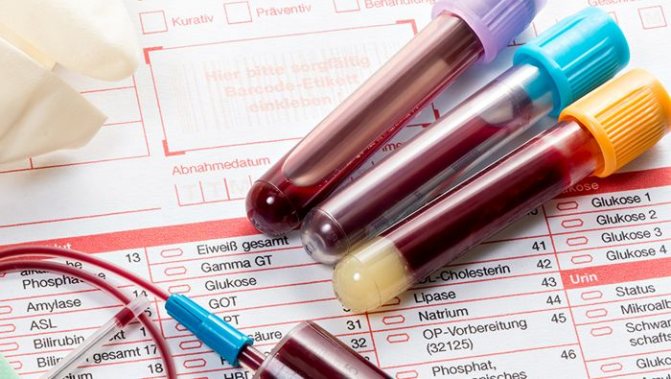
Indications for use
What else can you learn from the instructions for use of Amoxicillin 500 mg tablets? The medicine is prescribed for inflammatory diseases of infectious origin, such as:
- infections of the ENT organs and upper respiratory canals (sinusitis, pharyngitis, tonsillitis, acute otitis media);
- infection of the lower respiratory canals (chronic and acute bronchitis, pneumonia);
- infectious diseases of the genitourinary system (pyelitis, chronic and acute pyelonephritis, cystitis, gonorrhea, urethritis);
- gynecological diseases (cervicitis, endometritis);
- digestive tract infections (typhoid fever, enterocolitis, salmonellosis, shigellosis, salmonella carriage);
- peptic ulcer, chronic gastritis, provoked by Helicobacter pylori as part of a combination treatment;
- bile duct infections (cholecystitis, cholangitis);
- infections of soft tissues and skin surface (impetigo, erysipelas, secondary infected dermatosis);
- leptospirosis;
- latent and acute listeriosis;
- borreliosis (Lyme disease);
- endocarditis of infectious origin, for example enterococcal.
Dosage and method of administration
The indications and dosage of Amoxicillin must be strictly observed. The medication is taken orally. Children over 10 years of age (body weight more than 40 kg) and adult patients are prescribed 500 mg 3 times a day; for complex infectious diseases - 1 g 3 times a day. The interval between doses of the medication should be strictly observed - 8 hours. The maximum dose per day should not be more than 6 g. The course of therapy with the drug ranges from 5 to 12 days. It is recommended to continue taking the drug for another 48-72 hours after stabilization of body temperature or reliable destruction of the infectious pathogen.
For uncomplicated acute gonorrhea, men are prescribed 3 g of medication once. Women are recommended to take this dosage twice with an interval of 10-12 hours due to the likelihood of multiple lesions and the presence of an ascending inflammatory process with transition to organs located in the pelvis.
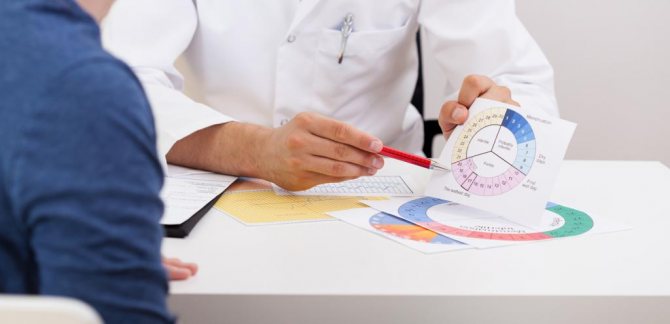
Allergy treatment
Symptoms - anaphylactic shock
If allergy symptoms intensify, the child experiences attacks of suffocation, or loses consciousness, then it is necessary to urgently call an ambulance. Amoxicillin can cause a severe allergic reaction, which can sometimes be fatal. Arriving doctors provide emergency care by administering the drug Epinephrine. Sometimes several injections are required, spaced 15 minutes apart. When using this drug, the paramedic must strictly adhere to the dosage. If an allergy to a drug occurs with mild symptoms, it is important to immediately show the child to a doctor. He will determine what to do depending on his condition. First of all, you need to stop taking the drug. The doctor will prescribe a remedy that can replace the antibiotic.
List of antihistamines of the 1st, 2nd and 3rd generation
After eliminating the source of the reaction, symptomatic treatment must be started. It is mandatory to take antihistamines with a pronounced effect. They block the production of the mediator, preventing further development of the reaction and intensification of symptoms. For children, Zyrtec, Fenistil, Zodak, Erius are recommended. Children's medications are produced mainly in the form of syrups and drops. You can also use drugs of the previous generation. These include Suprastin and Diazolin. However, it is prohibited to prescribe them yourself. Only a doctor can do this by selecting the optimal dose. In addition, they often cause side effects such as drowsiness and impaired concentration. Therefore, they are prescribed for severe manifestations of allergies. If symptoms do not disappear, intravenous injections of antihistamines are given.
Advantan ointment
Corticosteroids are also indicated for treatment. In children, they should only be used on a limited area and for a short time. It is best to use the new generation ointment Dermatol. It is prescribed to children starting from the first year of life. After 2 years, Mometasone is allowed to be used once a day. Strong glucocorticoids are indicated only in cases of extensive allergic reaction. If the skin lesions are not severe, then hormonal agents with a weaker effect can be used. These include Advantan. An allergic reaction to amoxicillin can be very severe. The consequences for humans are sometimes dire. In order not to lead to such a result, it is necessary to consult a doctor or call an ambulance at the first manifestations.
Amoxicillin is a drug that has a wide antibacterial spectrum of action and belongs to the group of penicillin drugs. This drug is used very widely today, especially for colds and infectious diseases, as well as in the postoperative period. Despite the fact that the drug is highly effective, it itself can often cause an allergic reaction.
Antibiotics belonging to the penicillin group very often contribute to the development of allergies in people of different ages. An allergic reaction caused by penicillins can cause serious complications.
Allergies caused by taking Amoxicillin are most often dermatological in nature and manifest themselves in the form of hay fever. But there are often cases when an allergic reaction to this drug can have serious manifestations. Since an allergy to Amoxicillin is a type of drug allergic reaction, if characteristic symptoms appear, you should immediately stop taking the drug.
Children's dosages
At the age of less than 10 years, this medication is mainly prescribed in the form of a suspension, since dosing the medication in capsules is difficult.
In pediatrics, Amoxicillin in capsule form is applicable only if the daily dosage is at least 500 mg. If this dose is taken in the morning and evening, it is best to use tablets that can be divided into two parts - 250 mg each.
If a dose of the drug is missed, you should take it as quickly as possible, without waiting for the next dose, and then maintain equal time intervals between doses.
Allergy treatment
Allergy to medications falls into the category of dangerous allergic reactions, which is why its treatment must be timely and correct. Such a pathology should never be left to chance, as this can cause the development of serious complications and dangerous diseases. As already indicated, first of all, after an allergic reaction occurs, you need to stop taking the drug and consult a specialist. To relieve the symptoms of drug allergies, medications are often used, which is why they should be prescribed by a doctor in order to avoid a repeat allergic reaction.
In order for the doctor to get a complete picture and correctly assess the patient’s condition, it is very important to provide him with the most complete information. The initial stage of any treatment is examination and collection of necessary information. If the examination fails to determine an accurate diagnosis, additional diagnostics are prescribed, based on the results of which treatment will be prescribed.
In addition to taking medications, treating drug allergies may involve changing your diet. It is very important to exclude all allergenic foods from the patient’s diet, as well as foods with strong flavors. In order to eliminate the symptoms of an allergic reaction as quickly as possible, you need to strictly follow your doctor’s prescriptions and undergo regular examinations.
Side effects of Amoxicillin
When taking a pharmacological drug, the following side effects may occur:
- Allergic phenomena: skin hyperemia, urticaria, erythema, rhinitis, angioedema, conjunctivitis, joint pain, febrile syndrome, fever, eosinophilia, exudative erythema multiforme, Stevens-Johnson syndrome, anaphylactic shock. Urticaria after Amoxicillin is quite common. This is confirmed by numerous reviews about the drug. And it happens in both children and adults. Allergic dermatitis also occurs after Amoxicillin, which is also quite unpleasant.
- Digestive system: change in taste, dysbacteriosis, nausea, vomiting, glossitis, stomatitis, impaired functional properties of the liver, moderate increase in the activity of liver transaminases, itching in the anus, pseudomembranous colitis. Many patients experienced diarrhea after Amoxicillin. Somehow this drug has an extremely negative effect on the gastrointestinal tract.
- Nervous system: psychomotor restlessness or agitation, anxiety, ataxia, insomnia, confusion, depression, behavior changes, cephalalgia, peripheral neuropathy, dizziness, aseptic meningitis, convulsions. What other side effects of Amoxicillin occur?
- Urinary system: acute interstitial nephritis, crystalluria.
- Laboratory values: neutropenia, leukopenia, agranulocytosis, anemia, thrombocytopenic purpura.
- Other side effects: difficulty breathing, candidiasis of the oral and vaginal mucosa, tachycardia, superinfection (more often in patients with chronic pathologies or reduced body resistance), discoloration of teeth in children.
Next, let's find out whether Amoxicillin has any contraindications.
How to replace Amoxiclav if you are allergic to it?
Doctors often prescribe the antibiotic Amoxiclav to fight infections. It is famous for its effectiveness and saves from serious diseases. But in some cases, the medicine can cause allergies, especially in children.
Causes of allergies
The causes of allergic reactions are mainly the following:
- heredity;
- drug overdose;
- presence of allergies;
- tendency to fungal diseases.
Allergy to Amoxiclav in a child
Symptoms of drug intolerance are as follows:
- rashes in the form of papules;
- redness of the throat;
- cough;
- labored breathing;
- skin itching;
- fever;
- Stevens-Johnson syndrome.
If the slightest deviation appears, show the child to the doctor. If he suspects a drug allergy, he may refer the patient for special laboratory tests and tests. Based on them, the doctor will identify the true cause of the symptoms and prescribe treatment.
Allergy to Amoxiclav in an adult
Symptoms of allergies to Amoxiclav in adults are similar to those in children. According to the period of occurrence, allergic signs are divided into:
Treatment of allergic reactions
If the consequences of allergies are significant (swelling, profuse rashes, agranulocytosis), then diet alone is not enough, drug therapy is prescribed. It includes antihistamines. They should be taken with caution so that these drugs do not cause allergies, so it is important that the therapy is carried out under the supervision of a doctor.
If treatment of allergic manifestations does not improve the situation, then the most effective method is used - parenteral administration of glucocorticosteroids.
Reviews from patients and doctors confirm the fact that the most common side effect of Amoxiclav is allergies. In order not to trigger the condition, you should seek medical help at the first signs of intolerance.
Found a mistake? Select it and press Ctrl + Enter
Comments on the article
List of contraindications
The medicine is contraindicated for use in the following cases:
- lymphocytic leukemia;
- history of diseases of the digestive tract (especially colitis caused by the use of antibiotics);
- Infectious mononucleosis;
- high sensitivity to the components of the composition (including other penicillins, carbapenems, cephalosporins).

During pregnancy and lactation
The instructions prohibit the use of Amoxicillin during breastfeeding. The antibiotic passes into the milk and can harm the baby. If there is a need for therapy, feeding should be suspended. The use of the drug during pregnancy has its own characteristics. Penicillins can cross the placenta and accumulate in it. Con in the amniotic fluid reaches 25-30 percent of the level in the blood plasma of a pregnant woman, this is a big risk for the development of the fetus.
Drug interactions
If significant side effects occur, it is necessary to take into account not only the direct effect of this medication on the body, but also its interaction with other medications.
The active element of this drug is not destroyed in the acidic gastric environment. Glucosamine, antacids, laxatives, aminoglycosides reduce and slow down the absorption of Amoxicillin, and vitamin C enhances it.
Bactericidal antibiotics (in particular, cephalosporins, aminoglycosides, rifampicin, vancomycin) have a synergistic effect, while bacteriostatic medications (macrolides, sulfonamides, lincosamides, chloramphenicol, tetracyclines) have an antagonistic effect.
This medicine increases the effect of indirect anticoagulants (suppresses intestinal microflora, reduces the prothrombin index and the synthesis of vitamin K), reduces the effect of oral estrogen-containing contraceptives.
Amoxicillin reduces the clearance and increases the toxicity of methotrexate and enhances the absorption of digoxin.
Allopurinol, diuretics, oxyphenbutazone, non-steroidal anti-inflammatory drugs, phenylbutazone, tubular secretion blockers increase the level of amoxicillin in the blood. Allopurinol increases the risk of skin rash.

ALLERGIC REACTIONS TO ANTIBIOTICS
You've probably heard that children can sometimes have adverse reactions such as diarrhea when taking antibiotics? But some antibiotics, such as Amoxicillin, can cause skin rashes... Here we will look at what is amoxicillin rash? How to identify it, and what to do if your child has it. Most antibiotics can cause skin rashes as a side effect. But the antibiotic Amoxicillin causes a rash more often than others.
This antibiotic belongs to the group of penicillin antibiotics. If your child develops hives, which are raised, itchy, white or red bumps on the skin that appear after taking one or two doses of the drug, they may be allergic to penicillin.
And then you should immediately consult a doctor, since the allergic reaction may worsen. You should stop taking the medication and consult your doctor. This type of rash often begins 3 to 10 days after starting amoxicillin. The rash can develop at any time during the course of antibiotics. While hives are most often the result of allergies, it is not yet fully understood what causes a maculopapular rash to develop. If your child develops a skin rash without hives or other symptoms, it does not necessarily mean that he or she is allergic to amoxicillin.
Girls are more likely than boys to develop a rash in response to taking Amoxicillin. Children who have had mononucleosis and then take antibiotics may be more likely to develop a rash. Today, far fewer children receive Amoxicillin to treat mononucleosis because it is an ineffective treatment. Infectious mononucleosis is a viral disease. However, about 30 percent of children with confirmed acute mononucleosis who receive amoxicillin develop a rash.
If your child develops urticaria, you can be treated with Diphenhydramine, following the age-specific dosage instructions. You should stop taking antibiotics until examined by a doctor. If a child has a skin rash of another type, then he can also be treated with Diphenhydramine if there is itching and stop taking the antibiotic until consulting a doctor, in order to eliminate the possibility of an allergic reaction.
Any allergy can be a very serious condition and can put your baby at risk of death. In most cases, the rash will go away on its own once the medication is stopped. If you have itchy skin, your allergist may recommend a steroid cream to apply to your skin. It is not dangerous in itself. But if the rash is the result of an allergic reaction, it can be dangerous for your baby. Allergic reactions tend to get worse with continued exposure to the allergen.
This can lead to the development of an anaphylactic reaction with respiratory distress. Contact an allergist if your child has hives or other symptoms such as wheezing or difficulty breathing.
You may have to go straight to the emergency room. You should also call your doctor if the rash does not go away or does not go away even after you stop taking the medicine. Examination and treatment of all types of allergies and bronchial asthma using modern international protocols.
To me, medical communication is not just complex overviews for professionals, but general medical knowledge is understandable and accessible to the general public. But some antibiotics like Amoxicillin can cause skin rash... Here we look at what is amoxicillin rash?
What is amoxicillin rash? What does an amoxicillin rash look like? There are two types of rashes caused by Amoxicillin. The most common type is the allergic type. Hives If your child develops hives, which are raised, itchy, white or red bumps on the skin that appear after taking one or two doses of the drug, they may be allergic to penicillin. Maculopapular rash This is the second type of rash that looks different. It appears later than hives and appears as flat red spots on the skin.
Smaller, pale spots usually occur at the same time as red spots on the skin. What Causes Amoxicillin Rash? It was also reported that almost every child developed the rash, ranging from 80 to one percent of the cases. How to behave if you have an amoxicillin rash? When should you see a doctor? Is amoxicillin rash dangerous? What to do next? Leave a comment Cancel comment Your email will not be published.
Special Recommendations
Of course, it is important to find out all about the contraindications of Amoxicillin before taking it. But there are other recommendations. In accordance with the instructions for use, this medication should be used with caution in the presence of allergic pathologies, high sensitivity to penicillins, carbopenems, cephalosporins, bleeding and a history of renal failure.
During long-term treatment, it is recommended to periodically monitor liver and kidney functions and conduct blood tests. In patients with renal failure and the elderly, the elimination of the main substance from the body may slow down, so some caution must be exercised when prescribing the drug to these groups of patients. In patients with reduced diuresis, crystalluria may occur, and therefore it is advisable to take large amounts of fluid during administration.
When treating with this drug, it is also necessary to take into account the likelihood of superinfection with bacterial and mycotic pathogens. In this case, it is recommended to discontinue the medication and prescribe appropriate therapy.
During treatment, false-positive results may be observed if chemical methods are used to test glucose levels in urine.
Overdose
People often mistake the symptoms of an overdose of a particular medication for side effects. When increasing the dose of medication without the consent of the doctor, the following conditions may occur:
- Dyspeptic disorders (vomiting, nausea), diarrhea, changes in water and electrolyte balance (as a result of vomiting and diarrhea).
- Patients often develop a fever. Dry mouth after Amoxicillin is also a common occurrence.
In case of overdose, the patient should be provided with appropriate medical care, which consists of urgent gastric lavage, taking activated charcoal, saline laxatives, and drugs to maintain electrolyte balance. In severe cases, hemodialysis is used.

The essence of the disease

An allergy to medications is a negative reaction of the body that develops when the immune defense is activated and is characterized by an attack-like onset.
This type of pathology occurs in approximately a fifth of patients. First of all, for those who “prescribe” medications for themselves and take them without medical supervision. Allergy to Amoxicillin occurs in adults and children due to intolerance to the components of a particular medicine. Even expensive medications do not guarantee safety.
Important! Allergy symptoms after each use of the same medicine can vary greatly in intensity and type.
Analogs
The main analogues of the drug “Amoxicillin 500 mg” can be drugs from the group of fluoroquinolones and macrolides, including:
- "Azithromycin";
- "Sumamed";
- "Fromilid";
- "Erythromycin";
- "Macropen".
These drugs are also prescribed if treatment with Amoxicillin did not produce a positive result, that is, this antibiotic could not destroy pathogenic microorganisms. In addition, it is replaced with analogues in cases where the patient experiences severe side effects.
Diagnostic methods
Before you stop taking an antibiotic, you should make sure that the reaction occurred specifically to it. Only a qualified specialist can determine the source of irritation.
To make a correct diagnosis, the doctor studies the patient’s medical history and performs an initial examination. Prescribed blood tests, including enzyme immunoassay, help check the level of immunoglobulin E and detect antibodies to the irritant.
To accurately determine the allergen, skin tests are used: scratches are made on the patient’s skin, onto which solutions containing different allergens are then dropped. The reaction of the skin can indicate sensitization to a particular substance.
A safer, but also more expensive diagnostic method is also used: venous blood is taken from the patient and mixed in the laboratory with solutions of various allergens. By changing its condition, one can judge an allergy to a specific substance.
What do the doctor's say?
Doctors note that patient complaints about side effects from taking Amoxicillin are common. This is due to the fact that any antibiotic is toxic, and the human body reacts to it quite painfully. With long-term use of an antibiotic, dysbiosis may occur, which is accompanied by complaints of abdominal pain and frequent diarrhea. A common complaint is that a rash appeared after taking Amoxicillin. Sometimes side effects occur such as disruption of digestive processes, which manifests itself in the form of heartburn, nausea, and belching. Often, patients experience diarrhea, which is caused by the death of beneficial bacteria on the intestinal mucosa.
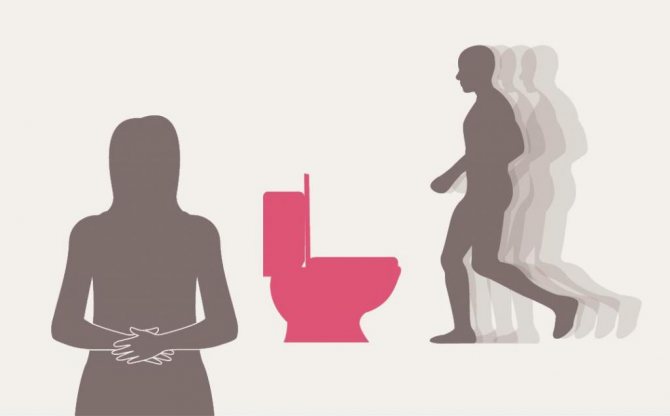
Some patients have kidney pain after taking Amoxicillin. According to doctors, people who do not have problems with the urinary system, as a rule, tolerate this remedy well. If there are any kidney diseases, the patient may experience pain in the back, difficulty urinating, etc. This is due to the fact that the process of removing the medication from the body is difficult.
Many people are interested in the question of whether it is normal for the temperature to rise after taking Amoxicillin. Experts point out that hyperthermia is a reaction of the immune system to pathogen cells. Therefore, the drug itself cannot directly increase the temperature, but it can provoke allergic reactions.
Allergy to amoxicillin in children
In case of complex disease, children are often prescribed amoxicillin. If parents do not know about the reaction to penicillin antibiotics, they need to pay special attention to the condition and well-being of the child. And if at least one of the above symptoms appears, you need to stop using the medicine.
An allergy may appear within an hour or at the end of taking the drug. The most acute manifestation is a rash that appears in the form of red spots in the abdomen, and subsequently spreads to the back and face.
A rare but dangerous allergic reaction is anaphylactic shock. It manifests itself as swelling of the throat and asthmatic condition.
But a prolonged allergic reaction to amoxicillin can lead to such consequences as:
- Diathesis.
- Asthma.
- Allergic rhinoconjunctivitis.
